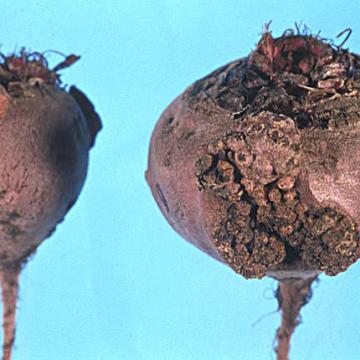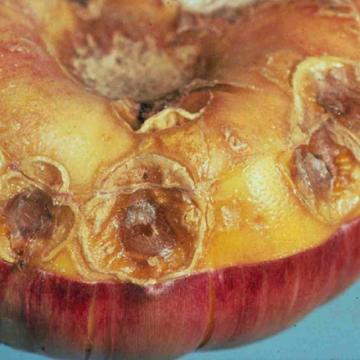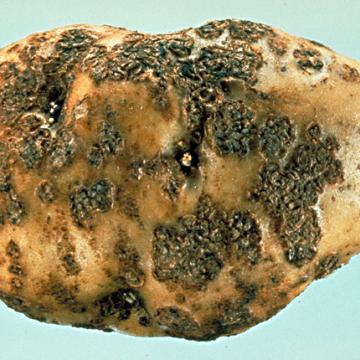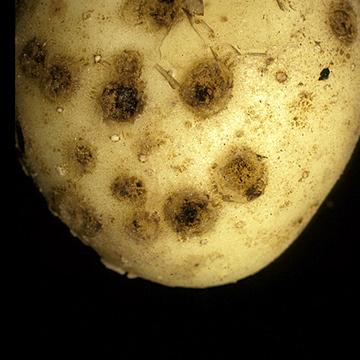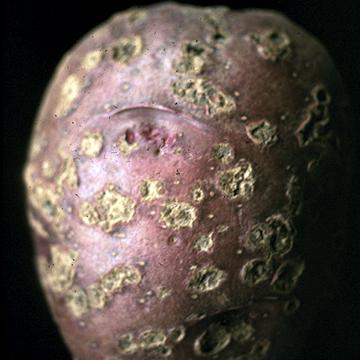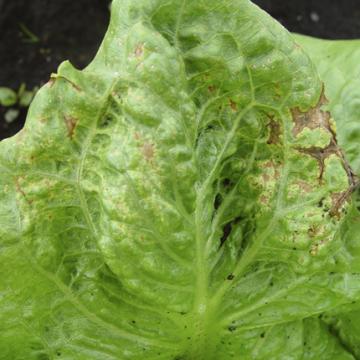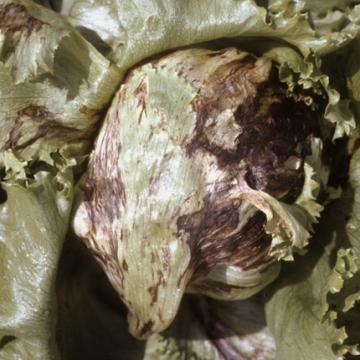DISEASE: Bacterial scab
HOST: Beet
Bacterial scab of table beet.
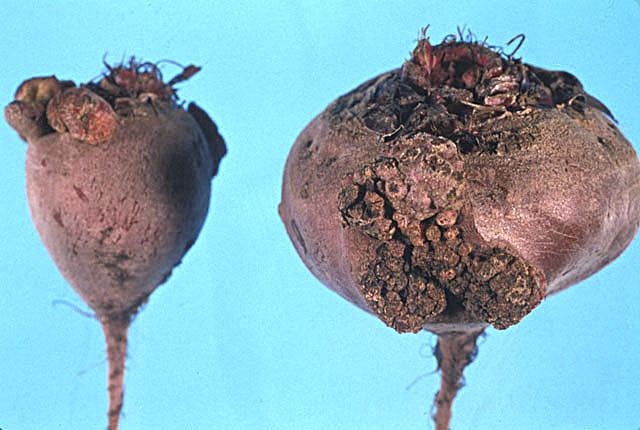
Bacterial scab | Beet
DISEASE: Bacterial scab
HOST: Beet (Beta vulgaris var. conditiva)
PATHOGEN: Pantoea agglomerans pv. betae
SOURCE: T. Burr
DISEASE: Bacterial scab
HOST: Gladiolus
Gladiolus bulb with brownish to dark brown, sunken scabs.
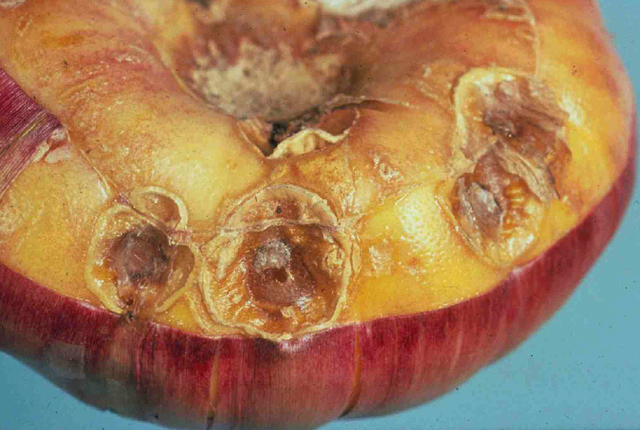
Bacterial scab | Gladiolus
DISEASE: Bacterial scab
HOST: Gladiolus (Gladiolus sp.)
PATHOGEN: Burkholderia gladioli pv. gladioli
PATHOGEN SYNONYM: Pseudomonas gladioli pv. gladioli
SOURCE: Plant Protection Service of the Netherlands
DISEASE: Common scab (Potato scab)
HOST: Potato
Symptoms of common scab vary depending upon the cultivar. The lesions can be shallow or deep, erumpent and corky, and vary in color.
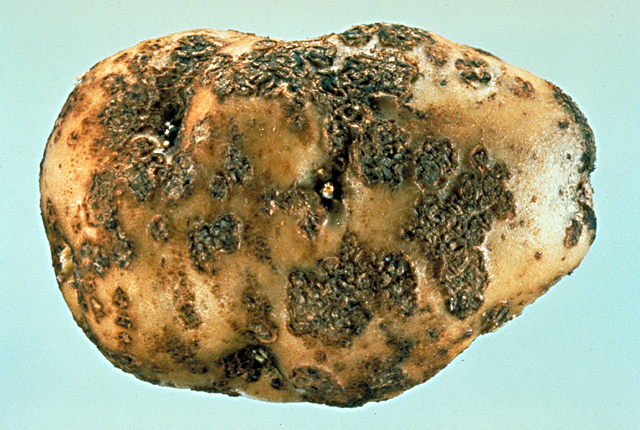
Common scab (Potato scab) | Potato
DISEASE: Common scab (Potato scab)
HOST: Potato (Solanum tuberosum)
PATHOGEN: Streptomyces scabiei
PATHOGEN SYNONYM: Streptomyces scabies
SOURCE: A. Secor
DISEASE: Common scab (Potato scab)
HOST: Potato
White-skinned tuber with sunken and superficial scab lesions.
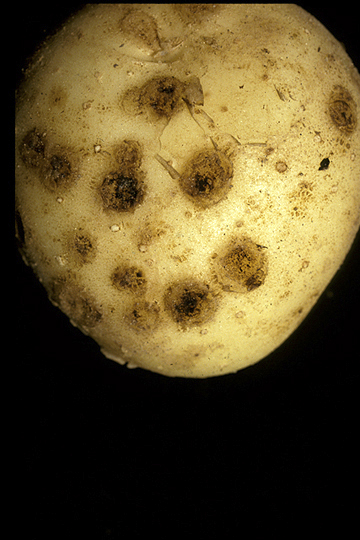
Common scab (Potato scab) | Potato
DISEASE: Common scab (Potato scab)
HOST: Potato (Solanum tuberosum)
PATHOGEN: Streptomyces scabiei
PATHOGEN SYNONYM: Streptomyces scabies
SOURCE: S. Thomson
DISEASE: Common scab (Potato scab)
HOST: Potato
Red-skinned tuber with lesions that usually penetrate less than 1 mm.
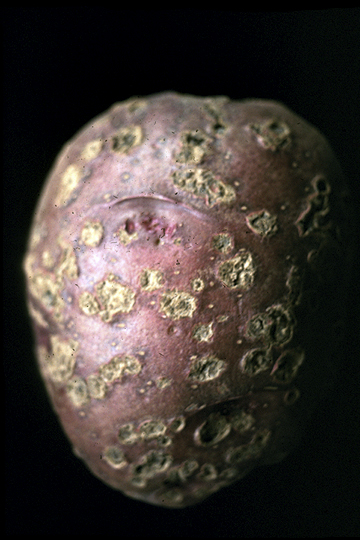
Common scab (Potato scab) | Potato
DISEASE: Common scab (Potato scab)
HOST: Potato (Solanum tuberosum)
PATHOGEN: Streptomyces scabiei
PATHOGEN SYNONYM: Streptomyces scabies
SOURCE: S. Thomson
DISEASE: Varnish spot
HOST: Lettuce
Leaf with large brown and small, shiny, dark brown necrotic spots that spread in size and later dry out.
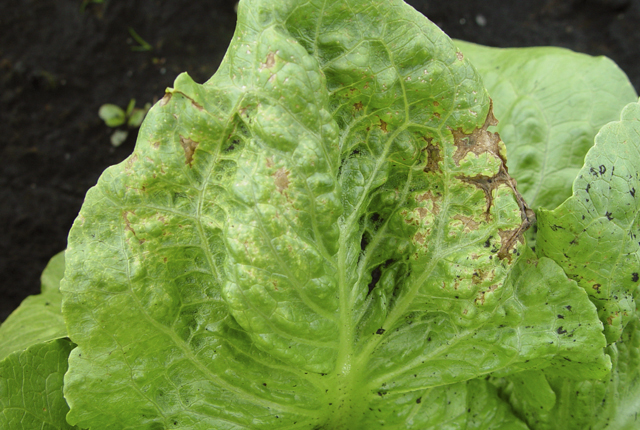
Varnish spot | Lettuce
DISEASE: Varnish spot
HOST: Lettuce (Lactuca sativa)
PATHOGEN: Pseudomonas cichorii
SOURCE: S. Miller
DISEASE: Varnish spot
HOST: Lettuce
Advanced stage of disease with large, brown necrotic areas. They most often are along veins. Outermost leaves of the head usually are not affected.
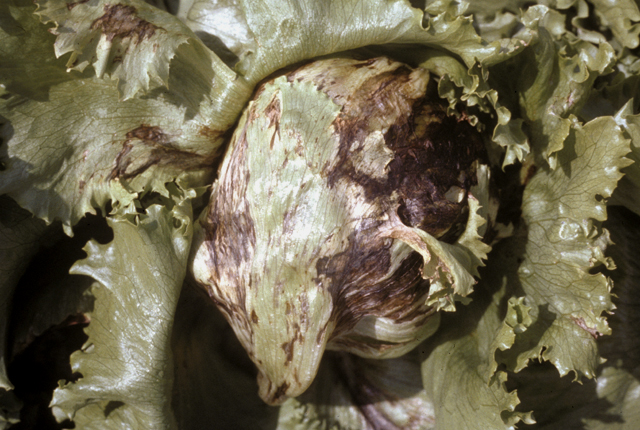
Varnish spot | Lettuce
DISEASE: Varnish spot
HOST: Lettuce (Lactuca sativa)
PATHOGEN: Pseudomonas cichorii
SOURCE: K. Ohata, M. Goto


